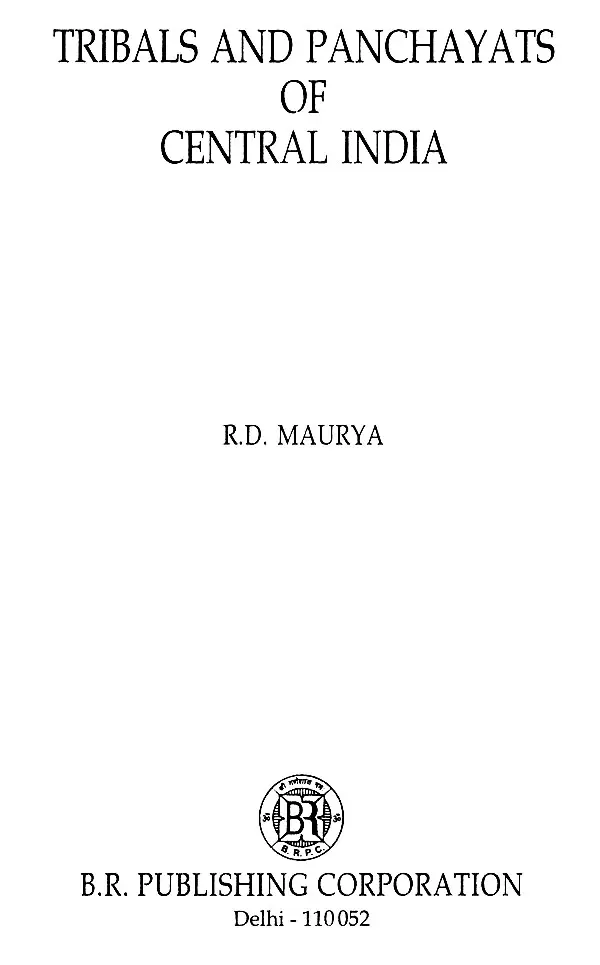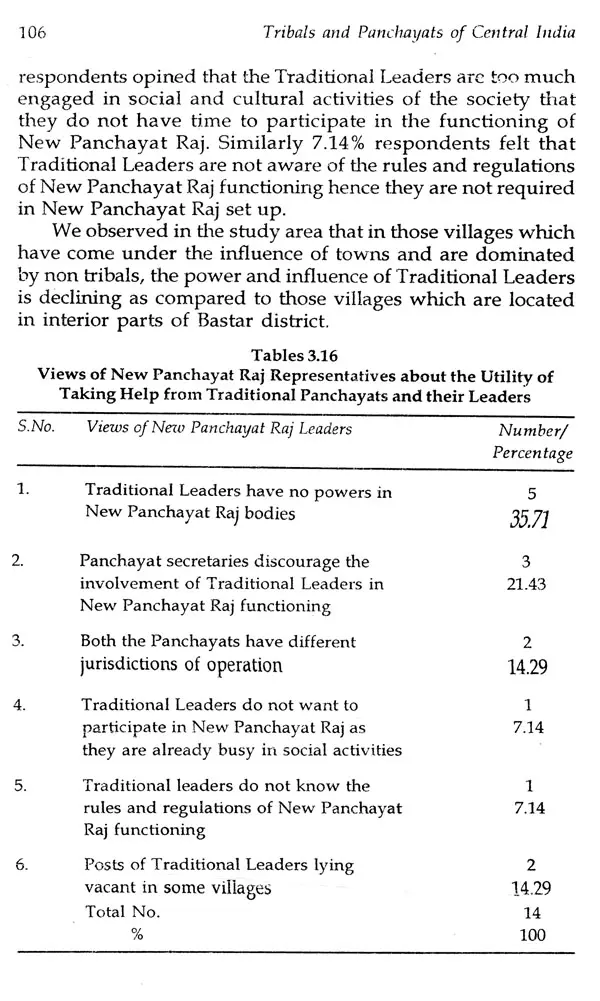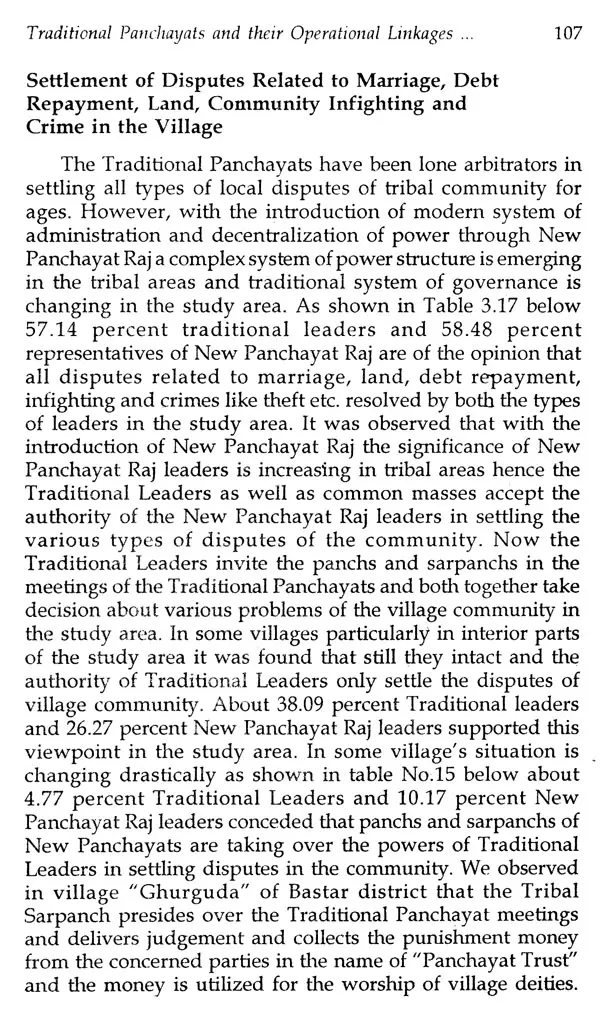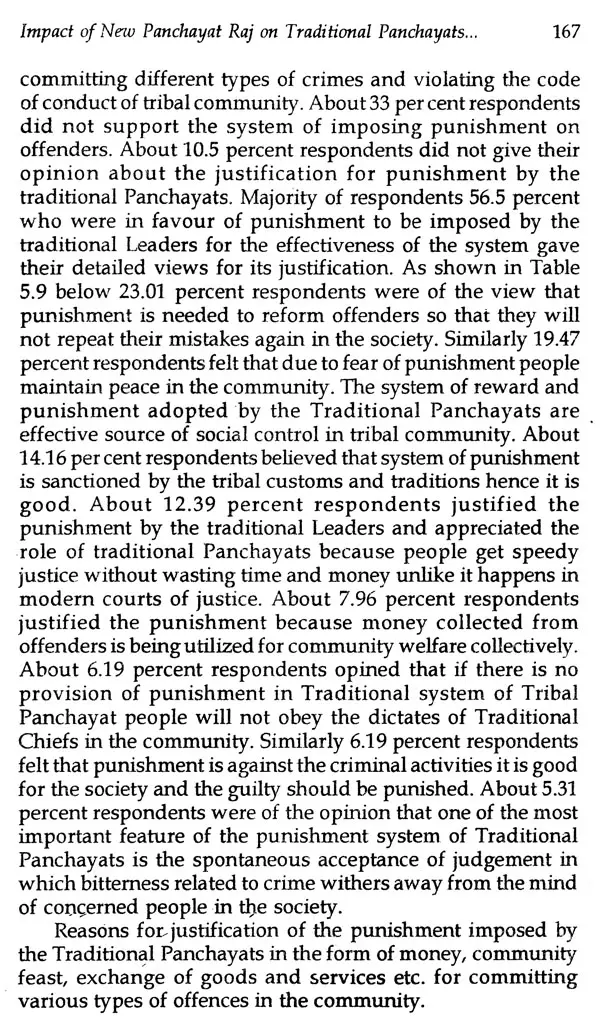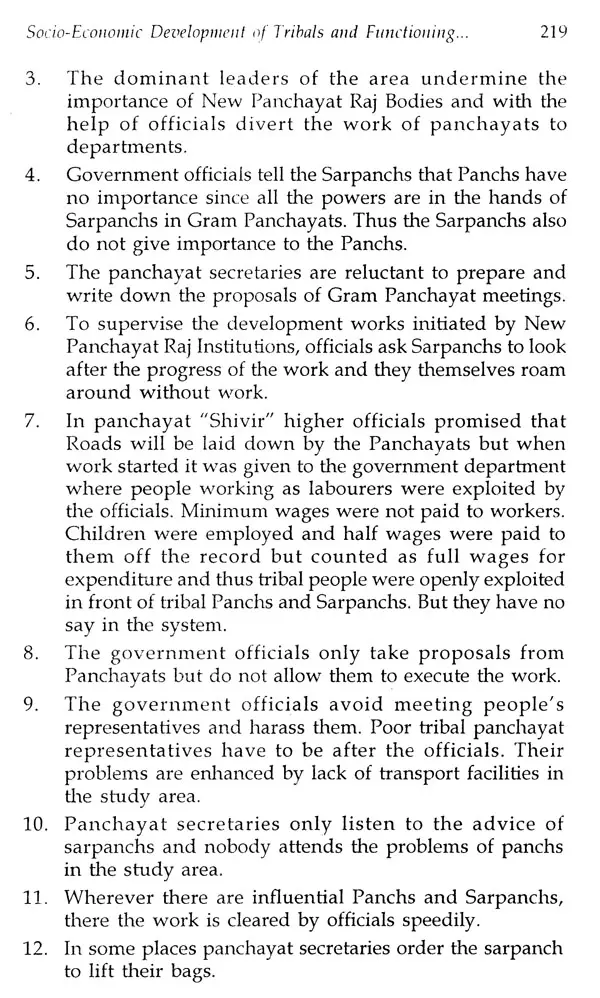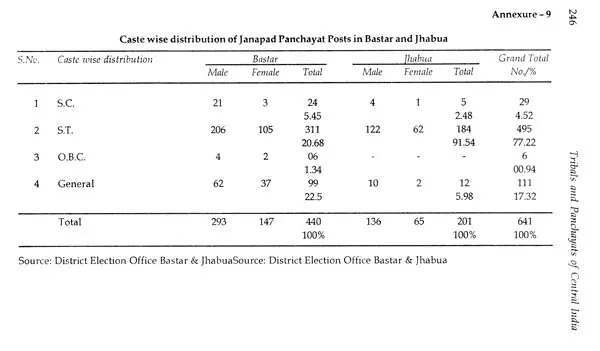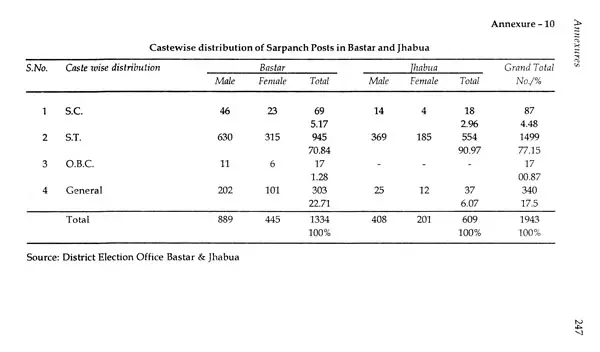
Tribals and Panchayats of Central India
Book Specification
| Item Code: | UAS665 |
| Author: | R.D Maurya |
| Publisher: | B.R. Publishing Corporation |
| Language: | English |
| Edition: | 2009 |
| ISBN: | 9788176466844 |
| Pages: | 277 |
| Cover: | HARDCOVER |
| Other Details | 9.00 X 6.00 inch |
| Weight | 520 gm |
Book Description
This book, comprising eight chapters, tries to address the issues of tribal self governance and emerging dimensions of relationship between traditional tribal panchayats and new Panchayat Raj institutions after the introduction of 73rd Constitutional Amendment Act 1993. The findings and conclusions of the book is based on the empirical data which was generated by intensive and extensive field work and close interaction and observation of tribals of Bastar and Jhabua districts of united Madhya Pradesh. This book also try to examine the pattern of relationship and functional linkages between traditional panchayat of tribals and new Panchayat Raj institutions. It has also analysed the areas of cooperation and conflict between traditional and new Panchayat Raj leadership.
traditional system of governance had undergone a drastic change in Jhabua district. After the independence the dynastic rule and their agents i.e. Thikanedars had been dislodged from the power position. However, at village level tribal traditional panchayats still functional and playing an important role in self governance system of the tribal community in Jhabua district. In Bastar district the structure and nature of tribal panchayats are different from Jhabua district. The tribals of Bastar district had strong cohesive political structure of which the ruler of Bastar who was also the Chief Priest of the Goddess Danteshwari, the presiding deity of tribals, is regarded as the political head. Chapter 6 of this book deals with the issue of women participation in new Panchayat Raj institutions and its impact on their socio-economic development. It also analyse the impact of Panchayat Raj on development and empowerment of tribals of central India.
Dr. R.D. Maurya is currently Professor and Head, Rural Development of Panchayat Raj Division at BANISS, Mhow. He got his higher education from Jawaharlal Nehru University, New Delhi. He has earlier served at NIRD, Hyderabad as a faculty member. He has been a visitor's nominee as a Member of Founding Board of Management at Dr. B.R. Ambedkar Central University, Lucknow. He has been a Member of Governing Body and Management Committee at BANISS, Mhow. He has been nominated as Member National Steering Committee of Planning Commission, Government of India on Scheduled Castes, Minorities and Backward Classes Development and Empowerment for 11th Five Year Plan. The author has written and published more than 25 articles in reputed journals and books. He has also extensively participated and organised National and International Conferences, Seminars, Workshops and Training Programmes. He has also guided more than 80 M.Phil. scholars and 15 Ph.D. scholars for the successful completion of their degrees at BANISS, Mhow. He has also completed 18 project studies deals with the issues of social justice, human right, rural development and decentralised governance and SC and ST development and empowerment in contemporary situation.
Panchayats have been in existence ever since the Vedic period in one form or the other. Panchayat literally means an assembly of elderly five, elected by the village community. It represents the immemorable system by which the village republics of India were governed, even though the colonial rulers, by their ruthless system of revenue collection, almost destroyed these ancient republics. The British rule has consciously broken the traditional self-governing social system of our country. A formal system was super-imposed in its place, whose objective was to strengthen the pillars of imperial power and to break the sense of self-respect of the people so that they may never raise their heads again. But because of stiff resistance in the tribal areas, this new system was not fully enforced there. Therefore, the self-governing communities and their institutions like Traditional Tribal Panchayats continue to function. To some extent they are still functioning.
The process of reviving the panchayats started during Lord Ripon who took the policy initiative of establishing popularly elected institutions at local levels in 1882. To look after the specified functions in their areas, village panchayats, district boards city corporations and town municipalities came into existence in different parts of the country during this period.
Sir Charles Metcalfe, the provisional Governor General of India (1835-36), had called the Indian village communities the 'little republics'. This does not mean that these democratic "republics" were ideal institutions working with the participation of all the people. Giving the caste-ridden feudal structure of the village society of those days, they left much to desire. B.R. Ambedkar did not think highly of these village communities and in fact his own experience had given him a negative view of the caste-ridden villages and their panchayats (George Mathew 1994). Ambedkar had remarked in the: Constituent Assembly on 4th November 1948, I hold that these village republics have been the ruination of India. I am therefore surprised that those who condemn provincialism and communalism should come forward as champions of the village. What is village but a sink of localism, a den of ignorance, narrow-mindedness and communalism? I am glad that the draft constitution has discarded the village and adopted the individual as its unit'.
Ambedkar may have summarised the conditions of the village communities too sharply. What is significant here is to guard against a romantic view of the ancient village system, especially in relation to the values of equality and democracy. Jaya Prakash Narayan had once perceptively commented that the old village communities had survived in nothing else except their physical existence. They were no longer living communities acting jointly for the solution of individual or communal problems and for the development of their moral and material life (Mathew 1994).
Book's Contents and Sample Pages
